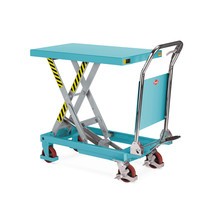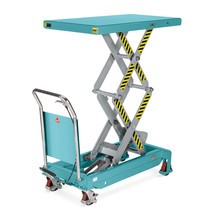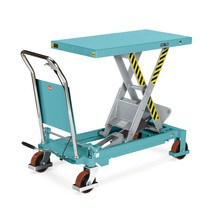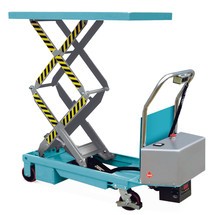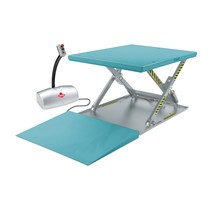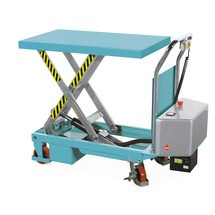
Scissor lift tables
Buying Tips
Filter
back
Your selection: 8 products
Scissor lift table on wheels, with folding handlebar, Ameise®
- With foot pedal for hydraulic raising of the load surface
- Fully variable lowering via hand lever
- Folding handlebar
Ameise® double-scissor lift table on wheels
- Robust steel construction
- Capacity of up to 700 kg, depending on model
- Frame and scissors made from welded sectional steel
Ameise® scissor lift table with wheels, fixed handlebar
- Foot pedal for easy lifting
- Fully variable lowering valve for precision manual lowering
- Chrome-plated handlebar
Double scissor lift table on wheels, electric, Ameise®
- Robust double-scissor lift platform truck with proven Ameise® quality
- 350 kg capacity
- Frame and scissors made from welded sectional steel
Flat scissor lift table, closed, Ameise®
- Robust steel construction
- Leveller for easy loading and unloading
- With separate control unit
Flat scissor lift table, U-shaped, Ameise®
- Robust construction with stable scissor bracing
- U-shaped platform for pallet and forklift trucks
- With separate control unit
Ameise® scissor lift table, single scissor
- Electric lifting and lowering of the platform
- Fully variable hydraulic height adjustment
- External control unit with pushbuttons, key switch and emergency disconnect
Scissor lift table on wheels, electric, Ameise®
- Robust single-scissor lift platform truck with proven Ameise® quality
- 500 kg capacity
- Frame and scissors made from welded sectional steel
